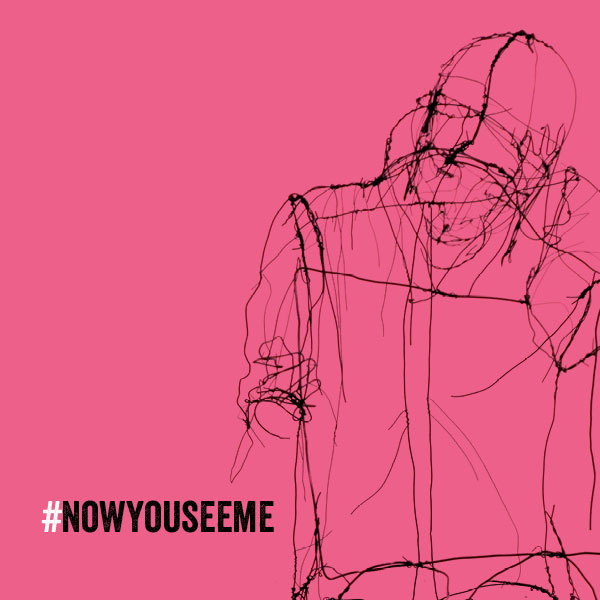Those of us living in big cities have likely all developed the same terrible habit: Avoiding looking at homeless people.
For this reason, we don't see how young many of them actually are. Just last year in the U.K., 103,000 people between 16 and 25 years old asked local authorities for help because they were homeless or at-risk; 52 percent received no documented support, according to statistics from Centrepoint.
Thus a U.K.-wide movement of local charities, operating together under the moniker End Youth Homelessness, tapped artist and sculptor David Oliveira to help bring light to what they call the "hidden homeless."
For the campaign, titled #NOWYOUSEEME, Oliveira created "invisible" sculptures, which will be stationed in train stations and shopping centers throughout the U.K.
The sculptures aren't actually invisible; they're composed of wire, shaped to form 3-D silhouettes.
"I chose this design solution because of its ability to express vulnerability and invisibility, both of which are important themes for hidden homeless young people," Oliveira says. "I chose to work with wire because it's urbane, malleable and strong. The empty spaces between the wire add an ethereal quality and communicate the fact that the body isn't fully visible."
The APA, or Advertising Producers Association, conceived the campaign. The collective is composed of production and media experts from firms like The Mill, Black Dog Films and Iconoclast, and editorial platform Little Black Book. #NOWYOUSEEME is also supported by Eversheds Sutherland, a corporate partner of End Youth Homelessness.
Little is known about what happens to the young people who reach out for aid and get no documented help. Some couch-surf … and once those options are exhausted, they resort to tougher measures—sleeping on buses, Tindering for an overnight "date," or injuring themselves to score a hospital bed.
Having nowhere safe to sleep exposes them to violence and abuse, but it can also make them sick. Centrepoint found that in 2016, 70 percent of young people felt couch-surfing affected their mental health, and 58 percent said it impacted them physically.
"It's our responsibility to protect homeless young people," Oliveira says. "They are not prepared for life, they are vulnerable … [and] because they are the future."
The five sculptures appeared at the Design Museum on March 21, supported by a launch film directed by Frankie Markot, with production company Black Dog Films. This weekend coincided with the Design Museum's Home Futures Exhibition, and the sculptures will no tour other public locations.
"Youth homelessness is overlooked and misunderstood," observes End Youth Homelessness M.D. Nick Connolly. "EYH's member charities do their best for young people every day, but unless society as a whole shares this responsibility, too many of today's homeless young people will become the rough sleepers of the future. The #NOWYOUSEEME campaign is a wonderful opportunity to remind ourselves of the inspiring capacity of young people to overcome the challenges they face if they receive the right support at the right time."




















